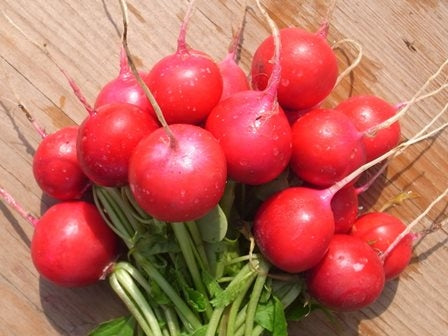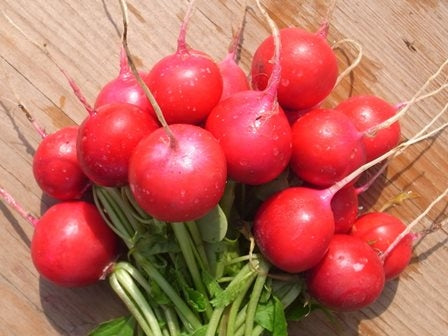SORA RADISH
Have a question?

SORA RADISH
Dettagli
Species: Raphanus sativus L.
Family: Brassicaceae – Cruciferae
Brief history and botanical notes on the plant
Radish (Raphanus sativus L.) is a herbaceous plant belonging to the Brassicaceae family, cultivated for its enlarged hypocotyl, commonly called root, which has a more or less spicy flavour and a spicy consistency.
The aerial part features lobed leaves with irregularly serrated edges. The flowers, with four petals, are white, pink, or purple; the fruit is a silique containing reddish, round or slightly elongated seeds.
Environmental needs
It prefers loose soils with plenty of organic matter.
Radish cultivation benefits from medium-textured, calcareous soils that are well-irrigated and rich in organic matter.
Crop rotation is an essential practice for growing radishes; if used as a main crop, it should be considered a renewal crop; if grown in small areas, it should be considered a catch-all crop. Rotation with other cruciferous vegetables is not recommended.
Variety
Numerous cultivated varieties are classified based on the shape and color of the root or the growing season. The most common varieties in Italy for round, red radishes are Cherry Belle and Saxa, for white, oblong radishes are Candela di Ghiaccio, and for red, oblong radishes are Candela di Fuoco, Ravanello Lungo, or Torino, or Tabasso.
Cultivation technique
The growing cycle lasts from a minimum of three weeks in the summer to a maximum of 2-3 months in the winter.
Use 4 to 8 kg/ha of seed with manual sowing on tilled soil to obtain a fine sowing surface; and 2 to 3 kg/ha with mechanical sowing.
Precision, with shallow distribution (1-2 cm deep). The distance between rows is 10-15 cm, and 3-4 cm along the row.
It requires frequent watering.
Collection, production and conservation
Yield per hectare is approximately 30 quintals. Radishes are sold packaged in ready-to-eat bunches with leaves, or, more rarely, in bags without leaves.
Adversities and parasites
The most damaging pest is the cabbage flea beetle (Phyllotreta spp.), which damages leaves both in the larval and adult stages.
Consociations
Being an undemanding and very fast-growing crop, it adapts to being introduced into the vegetable garden without particular problems, and can be combined with peas, carrots, beans, cabbages and lettuce.
Biodynamics
Treatments with Preparation 500, nettle macerate, are very useful as a preventative measure against flea beetle attacks. Horsetail decoction is also useful as a preventative measure against rust.



